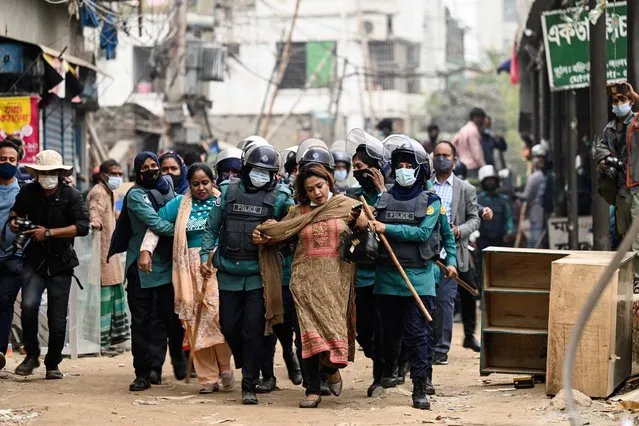
Police detain women as they were interfering with authorities during the demolition of buildings illegally built on government properties in Dhaka on January 23, 2022. (Photo by Munir Uz Zaman/AFP Photo)
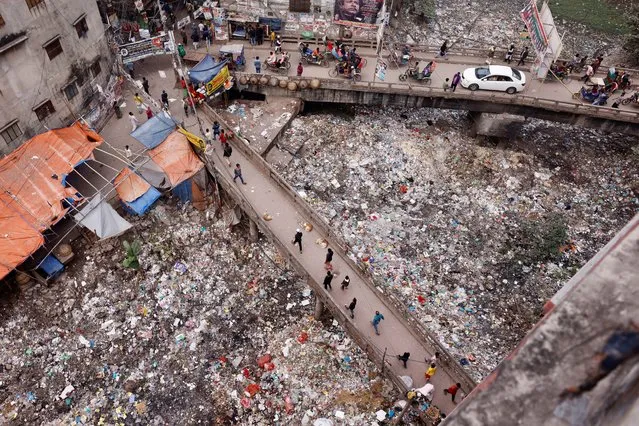
People walk along a bridge over a polluted area in Dhaka, Bangladesh, January 24, 2022. (Photo by Mohammad Ponir Hossain/Reuters)
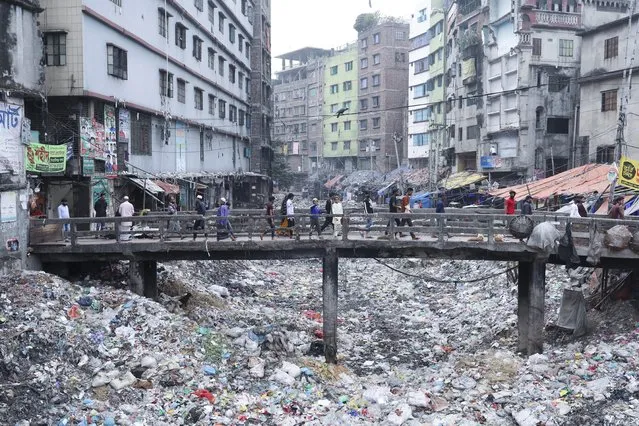
People walk along a bridge over a polluted area in Dhaka, Bangladesh, January 24, 2022. (Photo by Kazi Salahuddin Razu/NurPhoto via Getty Images)
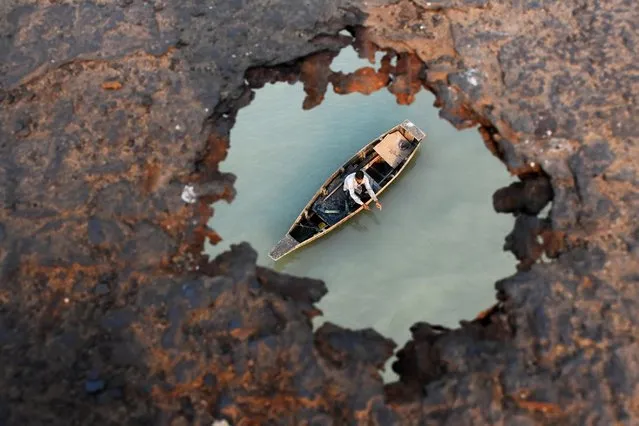
The railway-cum-road bridge was built in 1930 during the British rule. The bridge connecting North and South Chittagong was declared as risky in 2001. The length of Kalurghat bridge is 638 meters. Its span number is 19. In 1962, it was made suitable for all types of vehicles using steel decking and bitumen. The dilapidated bridge has been repaired in several phases since then. But it is still risky. Various accidents are happening every day. (Photo by Mohammed Shajahan/Anadolu Agency via Getty Images)
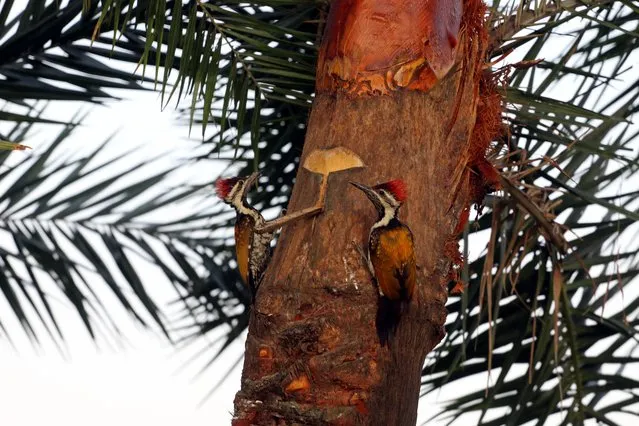
A species of woodpecker is seen pecking its beak into a date palm to extract date juice in Jashore village on January 22, 2022 in Dhaka, Bangladesh. (Photo by Habibur Rahman/Eyepix Group/Future Publishing via Getty Images)
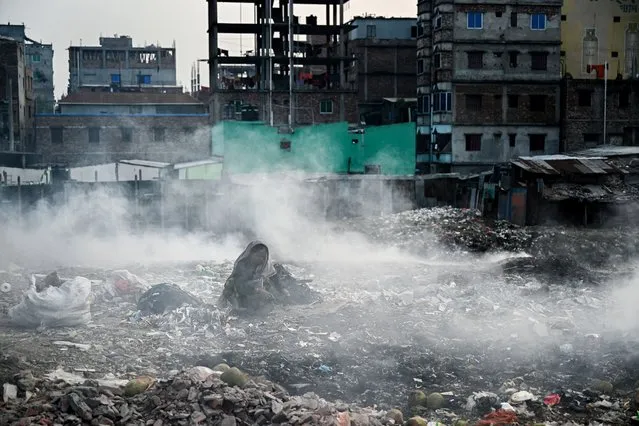
A woman scouts for reusable items from a pile of trash as smoke rises from a nearby area in Dhaka on January 31, 2022. (Photo by Munir Uz Zaman/AFP Photo)
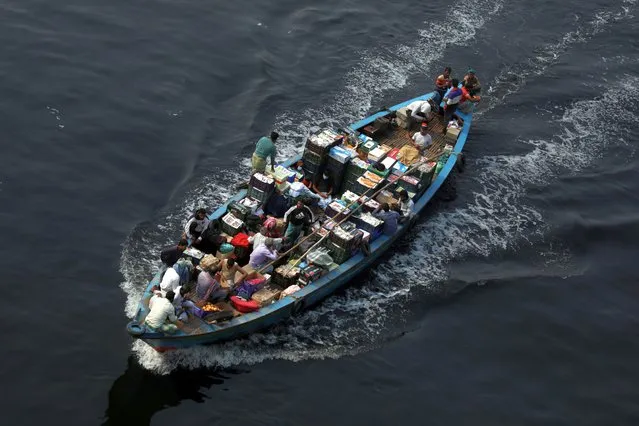
Vegetables are transported by a motorboat through the pitch-black water of the Buriganga River in Bangladesh on January 30, 2022. Millions of cubic meters of toxic waste from the tanneries and thousands of other industries, topped with a huge volume of untreated sewage from Dhaka City made water pollution in rivers reach alarming levels. (Photo by Habibur Rahman/ZUMA Press Wire Service/Rex Features/Shutterstock)
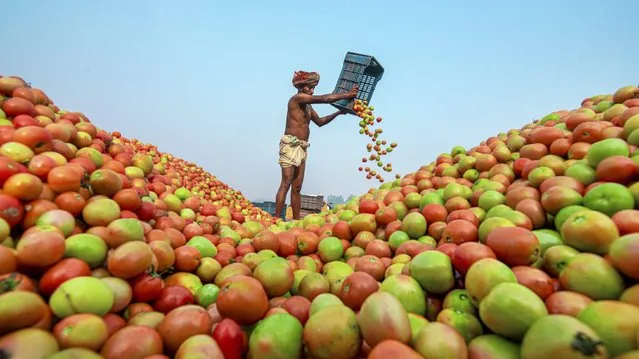
Tomatoes are brought by local farmers to a market in Dhunat, Bangladesh in the first decade of February 2022, where they are then bought in bulk. (Photo by Abdul Momin/Solent News)
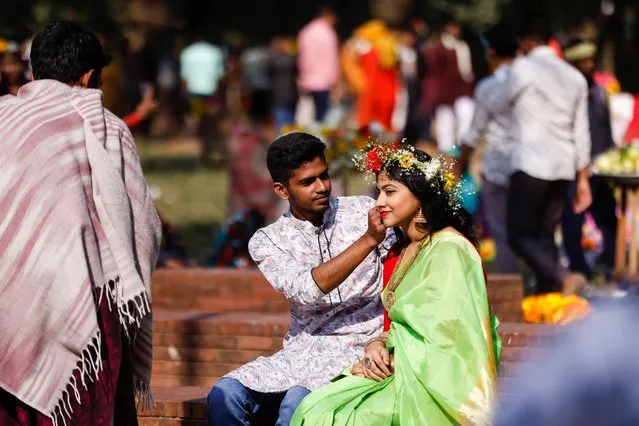
A man fixes a flower wreath on a girl's head on Valentine's Day in Dhaka, Bangladesh on February 14, 2022. (Photo by Mohammad Ponir Hossain/Reuters)
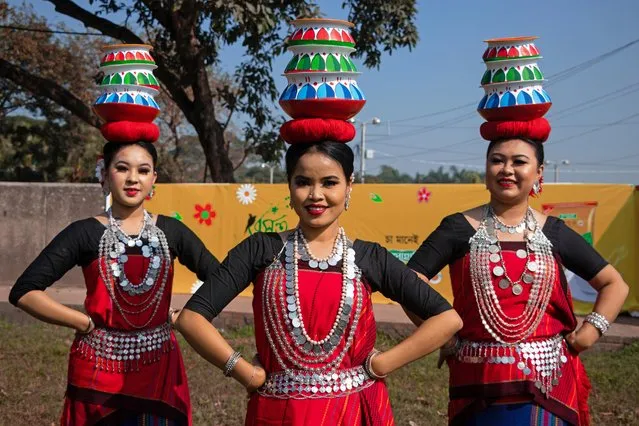
Women and children wearing traditional dresses with floral ornaments perform during “Basanta Utsab” (Spring Festival), also called “Pohela Falgun”, the first day of Spring of the Bengali month “Falgun”, in Dhaka, Bangladesh on February 14, 2022. The blazing red and yellow are the representative colours of “Pohela Falgun”. Hundreds of people take part in the cultural ceremony to welcome the first day of “Basanta” (Spring), known as the symbol of life, and begins with the first day of the Bengali month of “Falgun”. (Photo by Joy Saha/ZUMA Press Wire/Rex Features/Shutterstock)
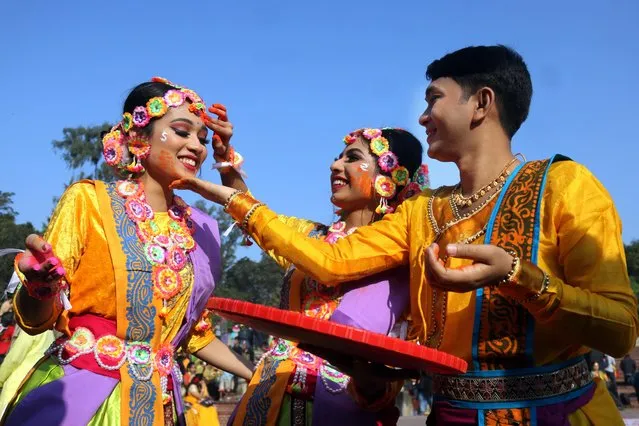
Women take part during a traditional ceremony to welcome the spring at Suhrawardy Udyan in the capital. People celebrate the Pohela Falgun (the first day of spring in the Bengali month Falgun) on February 14, 2022 in Dhaka, Bangladesh. (Photo by Habibur Rahman/Eyepix Group/Future Publishing via Getty Images)
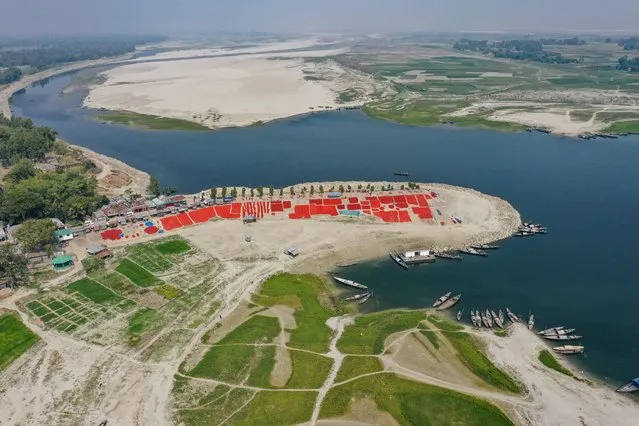
Aerial view of red chilli peppers being dried under the sun near Jamuna river at Bogra Bangladesh on February 19, 2022. Every day they earn less than USD $1 (Taka. 80) after work 8 hours a day. In northern areas of Bangladesh mostly women are engaged in its production and processing along with their regular unpaid care work. Women in this area have limited or no access to markets or finance; they have less bargaining power and limited income. (Photo by Zakir Hossain Chowdhury/Anadolu Agency via Getty Images)
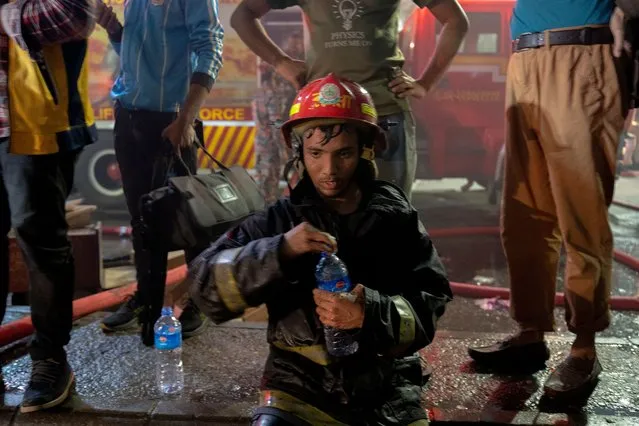
A firefighter drinks water after extinguishing the fire in Dhaka, Bangladesh on February 22, 2022. A fire broke out at Nilkhet book market, the largest book market. The fire gutted around 25 bookshops resulting in thousands of burnt books. The fire fighters doused the fire after about an hour. (Photo by Rizwan Hasan/Pacific Press/Rex Features/Shutterstock)
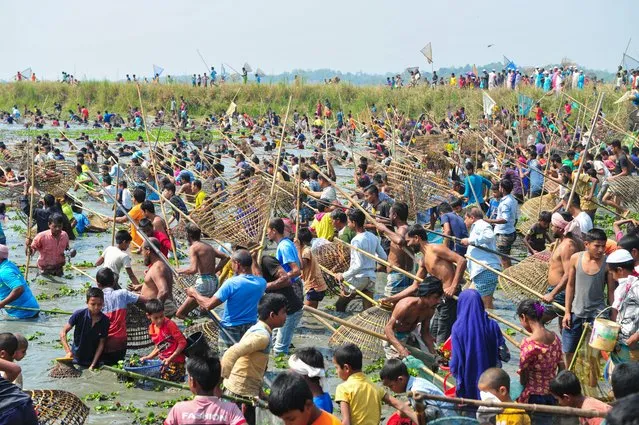
Villagers from Haripur and Balipara, Bangladesh gather together on March 8, 2022 at the 200-year-old Polo Bawa festival with their traditional fishing nets and ‘polo’ made of bamboo and cane, at a beel (wetland) in the Bangla calendar month of Falgun. (Photo by Md Rafayat Haque Khan/Zuma Press Wire/Rex Features/Shutterstock)
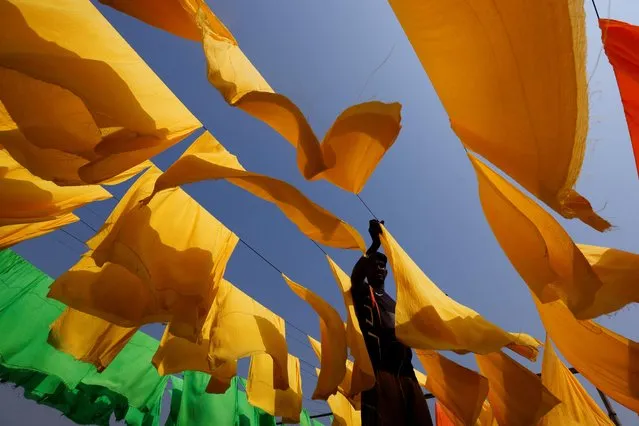
A worker dries fabrics after applying colour at a dye factory in Narayanganj, Bangladesh, March 9, 2022. (Photo by Mohammad Ponir Hossain/Reuters)
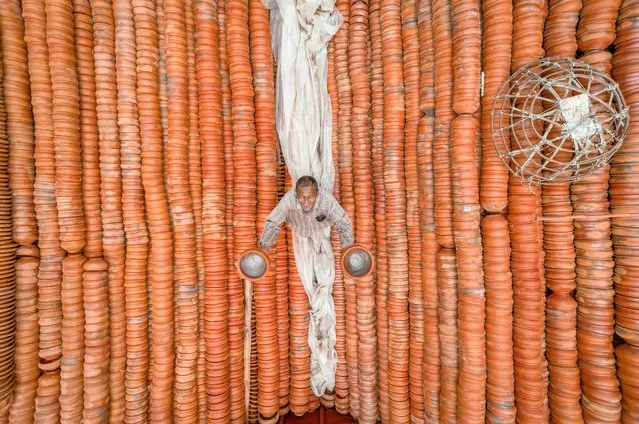
Workers load thousands of delicate pottery pieces onto a boat for them to be sold at local markets across the country. The picture are taken in Barishal Division, southern region in Bangladesh on March 10, 2022. A team of workers can make up to 25,000 handmade plant and plate pots each day. This is the only place in Bangladesh where pottery is transported by boat, as the usual method is by truck. (Photo by Mustasinur Rahman Alvi/ZUMA Press Wire/Rex Features/Shutterstock)
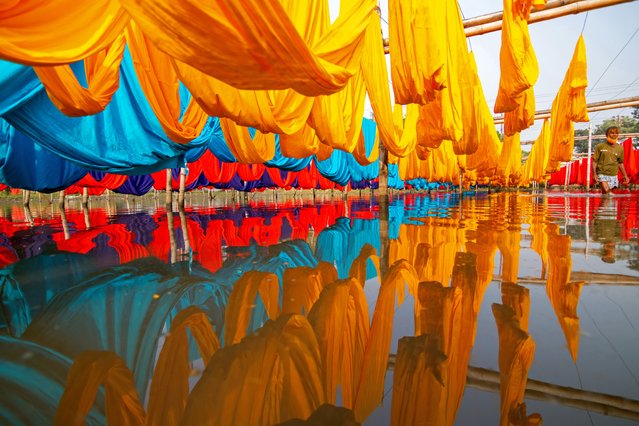
Workers hang thousands of different colorful fabrics on iron wires tied between a bamboo framework and constantly turn them so that they dry perfectly in a flooded field in Narayanganj, Bangladesh on March 16, 2022. Iron wires are used between a bamboo framework to create giant washing lines for the final part of the dying process as the fabrics are dried in the sun. Bright strands of blue, pink, orange and green-dyed cloths hang above the grassy field in a dazzling network of interlocking colors. This is the final part of the dying process after which the cloth is made into t-shirts and vests at the garment factory. (Photo by Joy Saha/ZUMA Press Wire/Rex Features/Shutterstock)

Rescuers recover the body of a child after a cargo vessel hit a ferry carrying dozens of people in Narayanganj, outside Dhaka, Bangladesh, Sunday, March 20, 2022. Six bodies were recovered, it is not clear immediately how many are still missing. (Photo by Mahmud Hossain Opu/AP Photo)
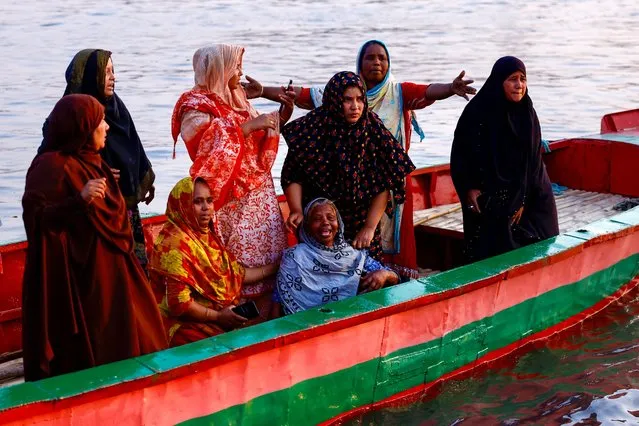
Relatives of the victims mourn as a ferry sank after colliding with a sand carrier ship in Narayanganj, Bangladesh, March 20, 2022. (Photo by Mohammad Ponir Hossain/Reuters)
25 Mar 2022 05:47:00,
post received
0 comments
